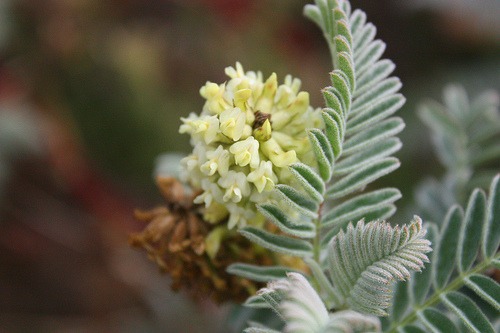Astragalus is a large genus of over 3,000 species of herbs and small shrubs, belonging to the legume family Fabaceae and the subfamily Faboideae. It is the largest genus of plants in terms of described species. The genus is native to temperate regions of the Northern Hemisphere. Common names include milkvetch (most species), locoweed (in North America, some species) and goat’s-thorn.
The herb is used as a raw material for making CO2 extracts. Despite the relatively high biological activity of astragalus, it is used in limited amounts.
It contains organic acids, saponins, a large amount of minerals, as well as a wide range of flavones, terpene compounds, coumarins, vitamin E.
Most often, alcoholic extracts (galenic preparations) of astragalus a are used as a substance in the manufacture of medicines. Such infusions have a calming effect, lower blood pressure and are a remedy for kidney disease and spasms of the coronary arteries. Astragalus infusions are also used to rinse the throat and mouth for angina, periodontal disease, and stomatitis. For the treatment of rheumatism, burns.
Astragalus is not used in food production or cooking.
Concentrated 100% CO2 extract of astragalus is an oily, greenish-brown liquid with a pronounced herbal aroma with a floral note. In view of the fact that the CO2 extract contains a concentrated set of those compounds that determine the biological activity of this plant, it should be taken into account that the CO2 extract has all the properties that astragalus herbal preparations have, but in a practical, more concentrated form.

Chart 1. The main components of the CO2 extract of astragalus
| NAME | CONTENT IN% OF THE AMOUNT OF VOLATILE COMPONENTS | EFFECT |
|---|---|---|
| Acetic acid | 66 | An effective degreaser, hair conditioner, brightens the skin |
| Palmitic acid | 15 | Unsaturated fatty acid for water repellency in cosmetics |
| Linoleic acid | 6,1 | An unsaturated, essential fatty acid from the class of omega-3 fatty acids. It has a membrane protecting, angioprotective effect. Immunomodulatory, improves brain metabolism |
| Dihydroactinidiolide | 2,1 | It is used in perfumery as a fragrance with a slightly cooling aroma |
| Phytol | 2,1 | Anti-inflammatory, also for mastopathy |
| N-Nankosan | 3,1 | Refers to saturated hydrocarbons, a fat-like compound. It has wound healing and anti-inflammatory properties. More than 30 compounds with biological activity have been identified in the CO2 extract of astragalus |
In cosmetics, astragalus CO2 extract is used as a dietary supplement for:
- Antioxidants
- Anti aging products
- Products for the active moisturizing of the skin
- healing agents
Given the chemical composition of the CO2 extract of astragalus, it can be assumed that it can also be used for:
- the normalization of the fat balance in dry skin
- anti-inflammatory and antimicrobial creams
Chart 2. Application rates, recommendations for the use and storage of the CO2 extract of atragalus
| Food usage rates | There is no exact data |
| Application rates in cosmetics | Item А10: 1-3% Item А100: 0.1-0.3% |
| Recommendations for use | It is recommended to add CO2 extracts in the final stages of preparation, in the cooling phase of the end product. |
| Storage Instructions | It is recommended to store CO2 extracts in a closed container in a cool room and avoid direct sunlight. |
Historical reference
It is believed that the name of this plant comes from the Greek word “astragalos” – the so-called cube made from ram’s knuckles, the shape of which is similar to the shape of the seeds of the plant. However, the astragalus had the greatest influence on the Scythian culture, so that this plant was later called “Scythian grass”. Well, the Scythians called astragalus itself “the herb of immortality”, its consumption was considered a privilege of the highest nobility, and ordinary mortals were forbidden to use this herb under threat of execution. Due to the popularity of this wild plant in folk medicine and its active harvest, the herb was threatened with extinction in our time and was included in the Red Book.